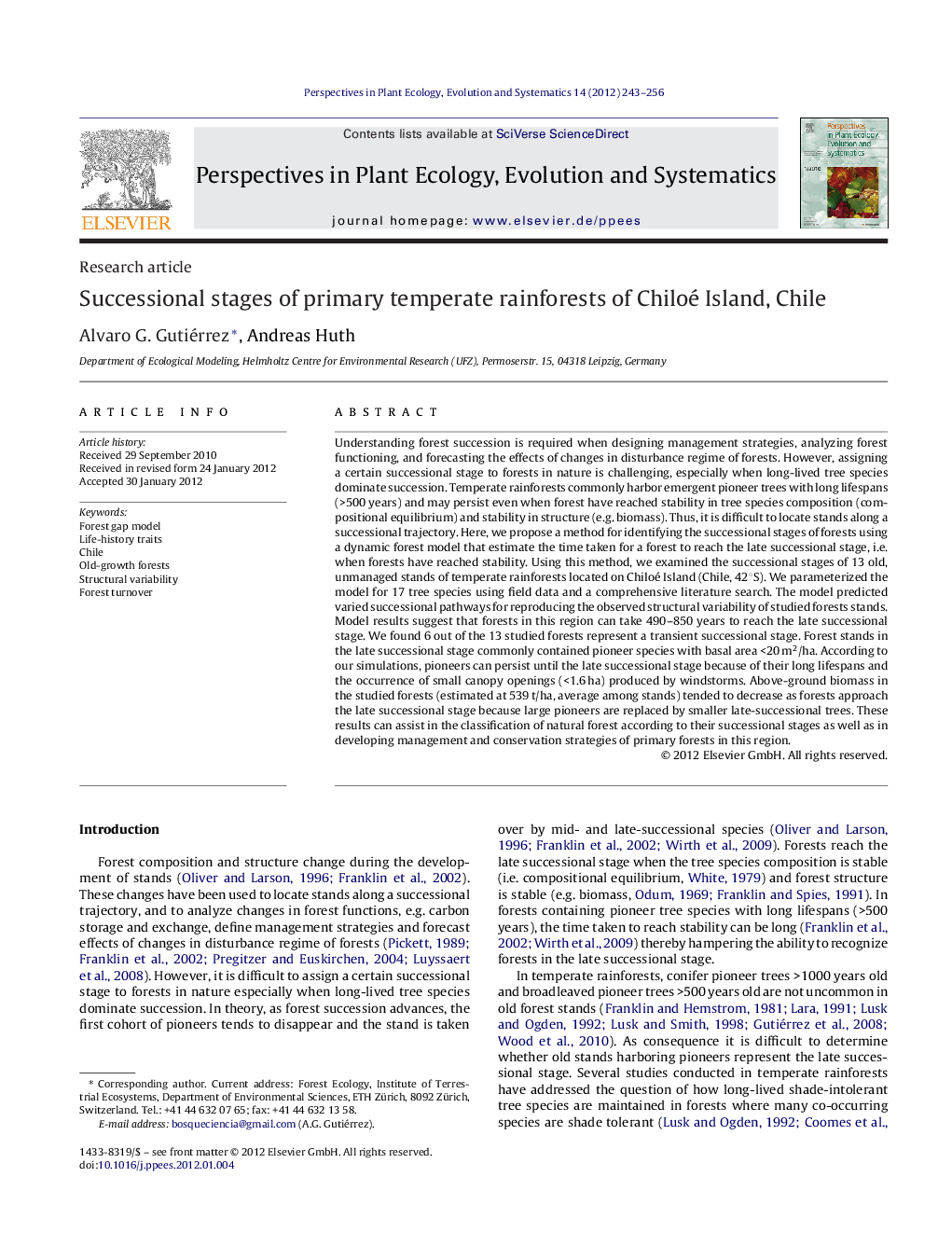| Article ID | Journal | Published Year | Pages | File Type |
|---|---|---|---|---|
| 4401061 | Perspectives in Plant Ecology, Evolution and Systematics | 2012 | 14 Pages |
Understanding forest succession is required when designing management strategies, analyzing forest functioning, and forecasting the effects of changes in disturbance regime of forests. However, assigning a certain successional stage to forests in nature is challenging, especially when long-lived tree species dominate succession. Temperate rainforests commonly harbor emergent pioneer trees with long lifespans (>500 years) and may persist even when forest have reached stability in tree species composition (compositional equilibrium) and stability in structure (e.g. biomass). Thus, it is difficult to locate stands along a successional trajectory. Here, we propose a method for identifying the successional stages of forests using a dynamic forest model that estimate the time taken for a forest to reach the late successional stage, i.e. when forests have reached stability. Using this method, we examined the successional stages of 13 old, unmanaged stands of temperate rainforests located on Chiloé Island (Chile, 42°S). We parameterized the model for 17 tree species using field data and a comprehensive literature search. The model predicted varied successional pathways for reproducing the observed structural variability of studied forests stands. Model results suggest that forests in this region can take 490–850 years to reach the late successional stage. We found 6 out of the 13 studied forests represent a transient successional stage. Forest stands in the late successional stage commonly contained pioneer species with basal area <20 m2/ha. According to our simulations, pioneers can persist until the late successional stage because of their long lifespans and the occurrence of small canopy openings (<1.6 ha) produced by windstorms. Above-ground biomass in the studied forests (estimated at 539 t/ha, average among stands) tended to decrease as forests approach the late successional stage because large pioneers are replaced by smaller late-successional trees. These results can assist in the classification of natural forest according to their successional stages as well as in developing management and conservation strategies of primary forests in this region.
